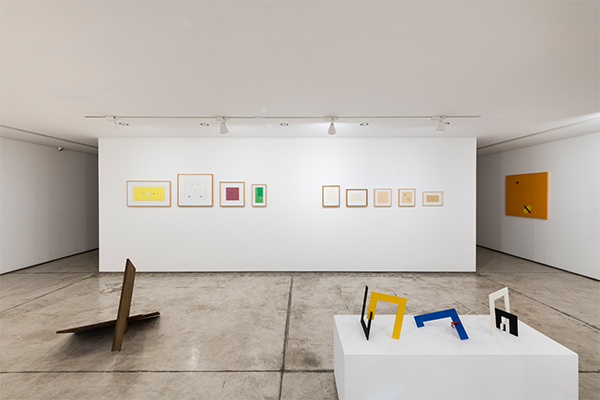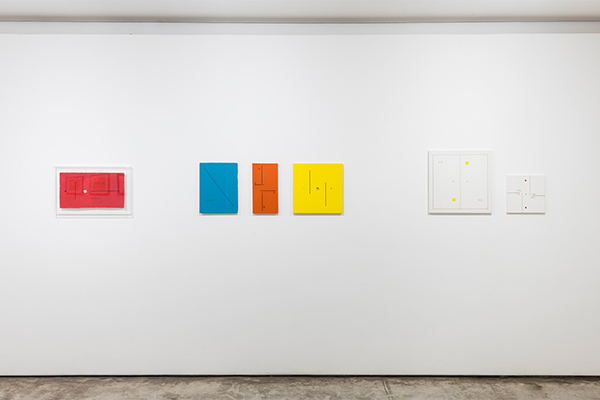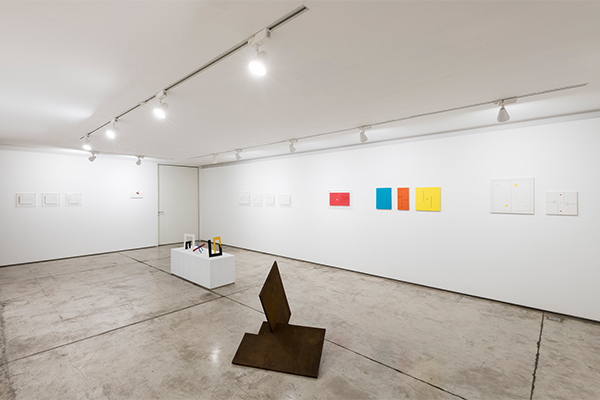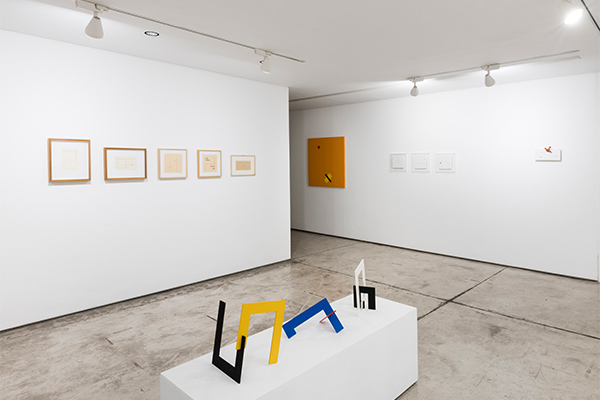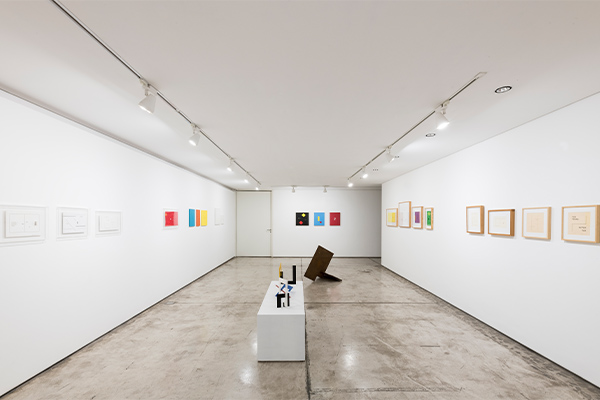almandrade today: the enigma of trace and shape, of letters and words
09 mar - 06 may_ 2023
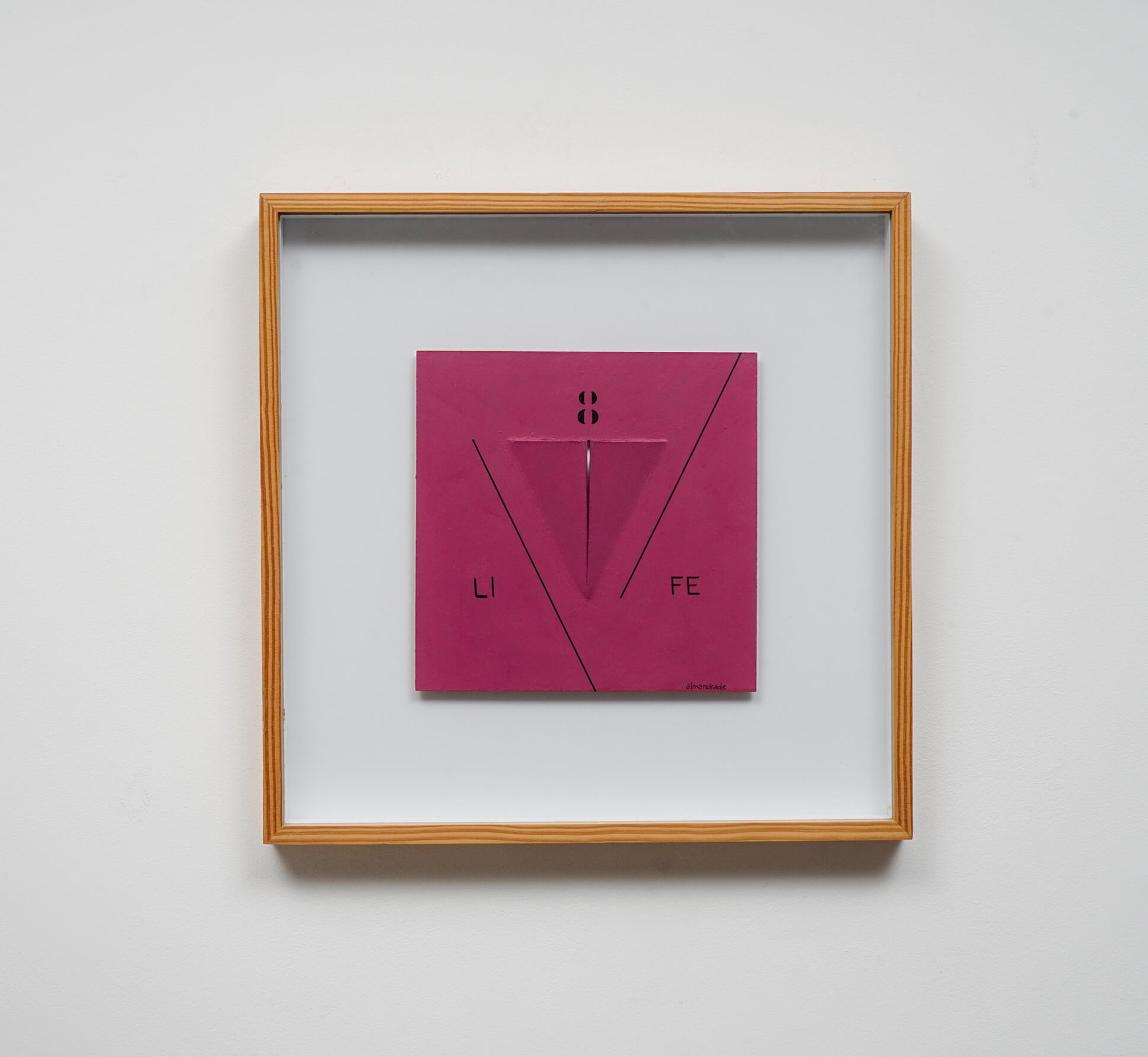
Almandrade today:
the enigma of trace and of form, of letters and words
The contemporary Brazilian art was partly consolidated by some auspicious paths that led to a politically and aesthetically special place for our cultural production: the resistance of a sort of visual poetry that also spread over to popular songs and plastic works, the consolidation of a constructive and concrete tradition in mid-20th century and the experience of the avant-garde modern architecture that provided the world with a new look at material heritage, construction, and urbanization. The vast, light, and precise literary and artistic production of Almandrade (São Felipe, BA, 1953) is the fruit of such amalgamation of paths. Therefore, it is not up to us to classify it. However, identifying some historical, geopolitical, and aesthetic anchors that helped building a poetic neighborhood for his performance is worthwhile. On the one hand, we may associate him with the prominent names of our neo-concrete and conceptual art and our concrete and visual poetry; on the other hand, there are also extended meanings and neighborhoods with names that came from other parts of Brazil, away from the primacy of the Rio-São Paulo art scene. When we thread our way through those references, we see possible approximations with the work of notables, such as Sérvulo Esmeraldo, from Ceará; Montez Magno, Daniel Santiago, and Paulo Bruscky, from Pernambuco; Raul Córdula, from Paraíba; and even the Wlademir Dias-Pino, Neide Sá and Álvaro de Sá, from Rio; in addition to Ridyas and Regina Silveira, from São Paulo. In general, these approximations are due to the identification of geometries and visual poems that stem from an experimental practice carried out bidimensionally on paper or canvas surfaces. Consequently, there is also the spatial progression of his artistic practice towards three-dimensionality, in which cutting and folding, shape and color act and activate the semantic field of sculpture. In this path towards the built space, in its most varied scales, it is impossible not to associate his production with Rio’s neo-concretism from the late 1950s, or even with Escola Brasil, which thrived in São Paulo in the 1970s. The approximation to this poetic repertoire of history of art and poetry in the country slashes and demarcates a symbolic place for Almandrade, beyond the avant-garde context of Salvador (BA).
Such an overview makes it possible to identify a crucial moment of Brazilian culture in which the artist gave his first steps: the years of lead (1968-1974) of the civil-military Brazilian dictatorship. It was in this period of darkness that his silent art was gestated, offering, not without humor, possible analogies to affective and political life. However, the work of Almandrade, in its entirety, should not be perceived as a consequence of only the chronological time, through a linear succession of works, each piece excelling the previous one and so on. In his 50-year-long career, there is a coherent conceptual and plastic outline that guides his daily production: permanent experimentation which triangulates as shapes of traces, letters and matter.
In the exhibition, for example, the arc of time of the selected artworks, from 1973 to 2021, allows us to note a persistence of thought and formal clarity, and thus we can travel light, loosely, through the time of this work, uncompelled to respond to what the milieu glorifies from time to time. This, perhaps, has a relation with the metaphysical reasoning within the artist’s works, in which its signs take on a new meaning, as the objects and canvases are observed and perceived by those who activate them, bringing his art into the conjugation of the present.
A key for reading them that seems relevant to me is the proximity to the conceptual and graphic language of architecture, a kind of existence that unveils spaces. It is a translation that I would like to call “quasi-architecture”: a poetic deed that seems to touch on the reasons for architecture itself as theory and praxis, an architectural quasi-existence. Such a perception comes to us when we observe the graphic resources of representation, the compositions, and, consequently, the spatial suggestions that are traced there.
Many of the drawings and paintings emulate a top view, a low flight over an imagined area. They are like architectural blueprints that make up a structure – something that is, at the same time, space represented and written poem. The compositional dance of the letters as they form words and the graphic arrangement of ink or acrylic lines promote this exclusive symbolic place of the work of art. They are places capable of approaching dialogic situations that come from the represented architecture: the inside and the outside, the private and the public, light and shadow, closed and open, etc.
Among the concepts that the critic tradition identified about the work of this artist from Bahia is the idea of “abstract nudism” – coined by the writer and artist Décio Pignatari –, which seems to fit like a glove. If the work is a poem or an object, if it is a piece of sculpture or architecture, we don’t know. Yet, as remarked by the critic, we notice the existence of works composed “accordingly to textbook definitions, but misleadingly meant and simplistic, for they are metaphysical”.
Thus, through the works arranged in the gallery space, the poetic and architectural enigma of Almandrade is qualified, which grants us in its multiple compositions the existence of “geometric meteorites of thought”[1].
[1] The citations in the last two paragraphs provide the teaching of Décio Pignatari (1927-2012), tituled “A persistência do nudismo abstrato: os objetos franciscanamente contundentes de Almandrade” (2006).
Diego Matos, between January and February of 2023.
Exhibition: Almandrade today: the enigma of trace and of form, of letters and words
Visiting hours: until May 06, 2023 (free entry)
Telephone 11. 3083-6322, e-mail info@raquelarnaud.com
Galeria Raquel Arnaud
Rua Fidalga, 125 – Vila Madalena – telephone: +55 11 3083-6322
exhibitions images
